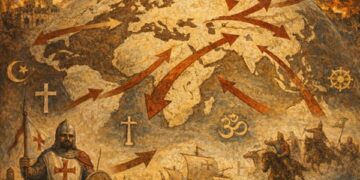By: Dr Vipul Gupta
It is no hidden truth that our country and the world have not fully recovered from the effects of the pandemic and are still facing challenges in the healthcare sector on a daily basis. One such incident is the rise in the number of cases of Brain Strokes. India is said to account for increasingly growing number of Stroke patients worldwide with prevalence rate of stroke ranging from 200/100000 in rural and 400/100000 in urban areas. The incidence of stroke in young is on the rise. The incidence is around 50/100000 and is nearly 2 to 3 times that of in the west.
Stroke is a serious medical condition which requires immediate medical attention and treatment. Stroke is referred to a brain injury caused due to blockage of blood flow going into the brain which gradually starts destroying brain cells. In some extreme cases, Strokes can even lead to internal bleeding as well.
According to several reports, the lifetime risk of stroke increases after the age of 55. But with adoption of unhealthy lifestyle habits like lack of physical exercise, smoking and excessive alcohol consumption, cases of Stroke have significantly increased in the younger generation of the country. The advent of technology with new gadgets and services has made life easier but has reduced the amount of physical activity a person gets.
The screen time is directly proportional to the risk of stroke, heart attack and cancer risk. The recommended screen time is 2 hours in a day. Beyond this the stroke risk increases by 20% for every hour increase. With increased levels of stress and rising incidences of diabetes and hypertension, there has been a sudden shift in the age bracket of people prone to strokes. The incidence amongst the younger is on the rise due to these modern risk factors of lack of exercise, obesity, dietary changes, excessive screen time and alcohol intake/smoking. Lack of proper hours of sleep and air pollution are also modern risk factors which are also making the young susceptible to stroke. Dr Vipul Gupta said that taking care of these risk factors can prevent 70% of strokes.
It has become important to learn the abbreviation FAST in order to tackle long term damage in cases of Brain Strokes. There is a short span of time to prevent fatal damage in cases of Brain Strokes, hence learning the signs and taking immediate action, FAST (Face drooping; Arm weakness; Speech slurred; Time to call an ambulance) can lead to positive outcomes during the treatment.
Lack of awareness in cases of Stroke is one of the major reasons contributing to disability or the mortality rate. Some people face cognitive impairments like trouble speaking or understanding and remain confused. Loss of vision accompanied by severe headache may also be a symptom for the start of stroke. Every minute if stroke is untreated, the average patient loses 1.9 million neurons. Golden hour of stroke is the first 6-8 hours, and urgent treatment is the key. In this period one can open the blocked brain blood vessel to restore blood flow and revive brain tissue. This is done either buy a clot dissolving drug (tPA) or by neurointerventional procedure of mechanical thrombectomy.
TELE- STROKE services
Resource constraints have also necessitated the initiation of tele-stroke services. SMART phone technology has allowed the neurologist at the tertiary center to support. physicians in the periphery in assessing and treating patients with acute stroke. The physicians are trained at regular intervals by way of ‘PRECEPTORSHIP programs to enable them offer stroke services in the periphery. With the help of the neurologist they can offer the ‘clot busting drug’ at the peripheral center.
THE DRIP AND SHIP MODEL
Due to the lack of a dedicated team of neuro-interventionists who can perform mechanical thrombectomy procedures, a new ‘Drip & Ship’ approach has been taken into effect, in and around Haryana, to provide the best healthcare services to any person suffering from a stroke. A clot dissolving injection is given to the patient at the peripheral hospital (called as DRIP) and then shifted to the stroke center (called as SHIP) to perform the mechanical thrombectomy procedure.
This way the advanced drug helps in increasing the time window in which intervention is needed in cases of Stroke. Immediate medical attention and treatment within 6 hours is needed to prevent any brain damage, but mechanical clot retrieval has increased the window time for intervention up to 24-48hours. However, this requires close coordination and cooperation between the peripheral and central stroke teams.
Using this approach, the patient receives the intravenous drug without the delay of transferring to another hospital. And they are able to receive the advanced mechanical thrombectomy treatment in the centers which focus on advanced stroke management. However, to be effective one has to receive treatment in the first few golden hours after stroke.
STROKE READY AND COMPREHENSIVE STROKE CARE CENTERS
In collaboration with the World Stroke Organisation soon a central board will accredit hospitals across India as either stroke ready or comprehensive stroke care center. These centers will be able to better provide stroke care and patients are likely to get the best possible care from these centers
At Artemis we have dedicated stroke care services on par with a comprehensive stroke care center. The team here has trained physicians in the periphery at regular intervals to provide stroke care in periphery. The drip and ship model initiated at Artemis has allowed treatment of many stroke patients across the region. Many octogenarians and few nonagenarians have benefited from treatment and leading independent lives.
Prevention is the best treatment, in the event of stroke modern treatments can successfully cure many patients.
The writer is Director, Neuro Intervention, Agrim Institute for Neuro Sciences, Artemis Hospital






